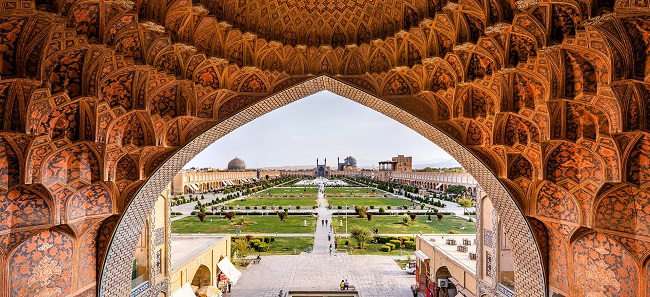Naqsh-e Jahan Square, also known as Imam Square, is a historical site located in the heart of Isfahan, Iran. It is one of the largest public squares in the world and a UNESCO World Heritage Site. The square was built in the 17th century during the Safavid dynasty and served as the center of the city’s social and cultural life. Today, Naqsh-e Jahan Square remains one of the most important landmarks of Isfahan and a must-visit destination for tourists.
The construction of Naqsh-e Jahan Square began in 1598 by order of Shah Abbas I, the greatest Safavid king. He wanted to create a public space that would reflect the grandeur and power of his empire. The square was designed by architect Ali Akbar Isfahani and completed in 1629. It covers an area of approximately 89,600 square meters and is surrounded by historical buildings, including mosques, bazaars, and palaces.

The architecture of Naqsh-e Jahan Square is a masterpiece of Islamic art and architecture. The square is surrounded by four monumental buildings, each representing a different aspect of Safavid culture and religion.
On the east side of the square is the Sheikh Lotfollah Mosque, which was built between 1602 and 1619. The mosque has a unique design with no minaret or courtyard. It was built for private use by the royal family and was named after Sheikh Lotfollah, a prominent Shiite scholar of the time.
On the west side of the square is the Ali Qapu Palace, which served as the residence of Shah Abbas I. The palace was built between 1597 and 1614 and has six floors with a magnificent music hall on the top floor. The palace also has a terrace overlooking the square, where the Shah would watch polo games and other public events.
On the south side of the square is the Imam Mosque, also known as the Shah Mosque. The mosque was built between 1611 and 1638 and is considered one of the most beautiful mosques in Iran. It has a large dome, two minarets, and intricate tile work on its façade.
Finally, on the north side of the square is the Qeysarieh Bazaar, a traditional market that has been operating since the 17th century. The bazaar has several sections, including the carpet bazaar, spice bazaar, and gold bazaar. Visitors can explore the bazaar and buy souvenirs such as Persian carpets, spices, and handicrafts.
read more : Sadabaad Palace
Naqsh-e Jahan Square offers several activities for visitors to enjoy. Tourists can take a guided tour of the square and its buildings to learn about the history and architecture of the site. They can also attend cultural events such as music concerts, poetry readings, and traditional performances that take place in the square.
Visitors can also relax in one of the many cafes and restaurants located around the square. These cafes offer a stunning view of the square and its buildings and are a great place to enjoy traditional Iranian cuisine.

Naqsh-e Jahan Square is a symbol of Iran’s rich history and culture. It is a must-visit destination for tourists who want to explore the beauty of Islamic art and architecture. The square’s magnificent buildings, intricate tile work, and traditional bazaar make it a unique destination that attracts millions of visitors every year. It is no wonder that Naqsh-e Jahan Square is considered one of the jewels of Isfahan and a UNESCO World Heritage Site.